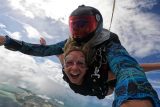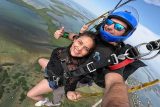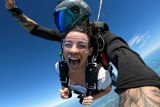Can You Go Skydiving And SCUBA Diving On The Same Day?
Skydiving
Posted by: Skydive Key West
1 year ago
SCUBA diving and flying can be besties as long as they’re in a long-distance relationship! Let’s set the scene: you’re living your best sunshiny dreams and vacationing in Florida. In order to squeeze the absolute most out of your stay in the Sunshine State, you want to go SCUBA diving and skydiving same day. Can you go diving after flying? What about flying after diving? Does it matter? YES! It matters big time, let’s dive into it.
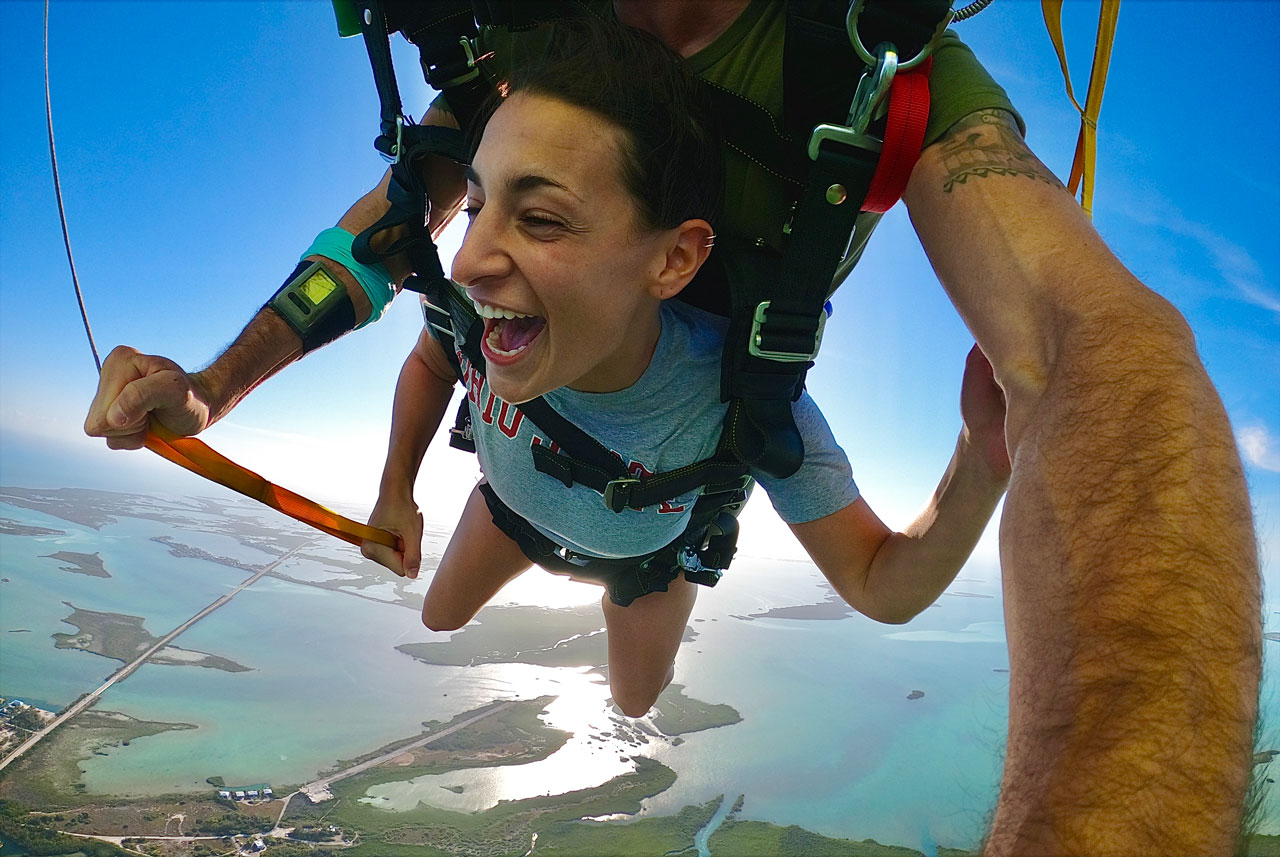
Why Does The Order Matter?
Is it OK to SCUBA dive before flying? No! Which rules out same-day skydiving too, of course. But why can’t you go SCUBA diving before skydiving? For a very good reason: we don’t want you to get decompression sickness and have lasting negative effects or experience death – we’ve only got one life and we need to live it!
Decompression illness happens when a person goes from an area with a lot of pressure (like the depths of the ocean) to an area with less pressure (like flying through the sky), expeditiously. SCUBA divers who experience decompression sickness symptoms (commonly referred to as “the bends”) may endure cramps and numbness in their joints, or even paralysis and a loss of consciousness which could be fatal; decompression illness doesn’t sound like a very good time at any level.
What happens if you SCUBA dive and fly on the same day? Your blood can have a bit of a meltdown and have some pretty gnarly consequences. The gasses breathed in while underwater are sensitive, and if their environment (pressure) changes too quickly for comfort, they can form air bubbles inside the tissues and/or bloodstream of your body.
The Science Behind The Bends
When you SCUBA dive, the breathing equipment supplies you with a perfect mix of nitrogen, oxygen, and helium to emulate the most ideal combination for your lungs to comfortably breathe – this mix is primarily nitrogen. During a SCUBA dive, you experience a greater amount of pressure than on the ground. This pressure causes the gasses being breathed in (and put into your bloodstream and your tissues) to behave a bit differently than on the earth’s surface.
Basically, the amount of nitrogen absorbed by the blood increases as the depth and duration of the dive increases – this is why SCUBA divers often practice off-gassing on the ascent back to the water’s surface. The nitrogen needs sufficient time to be released from the tissues to the bloodstream, to the lungs, and eventually back into the atmosphere. If you ascend too quickly, the bends can set in.
- What is off-gassing? Performing off-gassing, called decompression, is the act of allowing your body an ample amount of time to readjust to its normal state at different pressures – SCUBA divers often stop at different depths during their ascent through the water. Once safely back on the surface, it’s critical to give your body time to fully adjust back to normality, which is why going to altitude in an airplane has a guaranteed blowback.
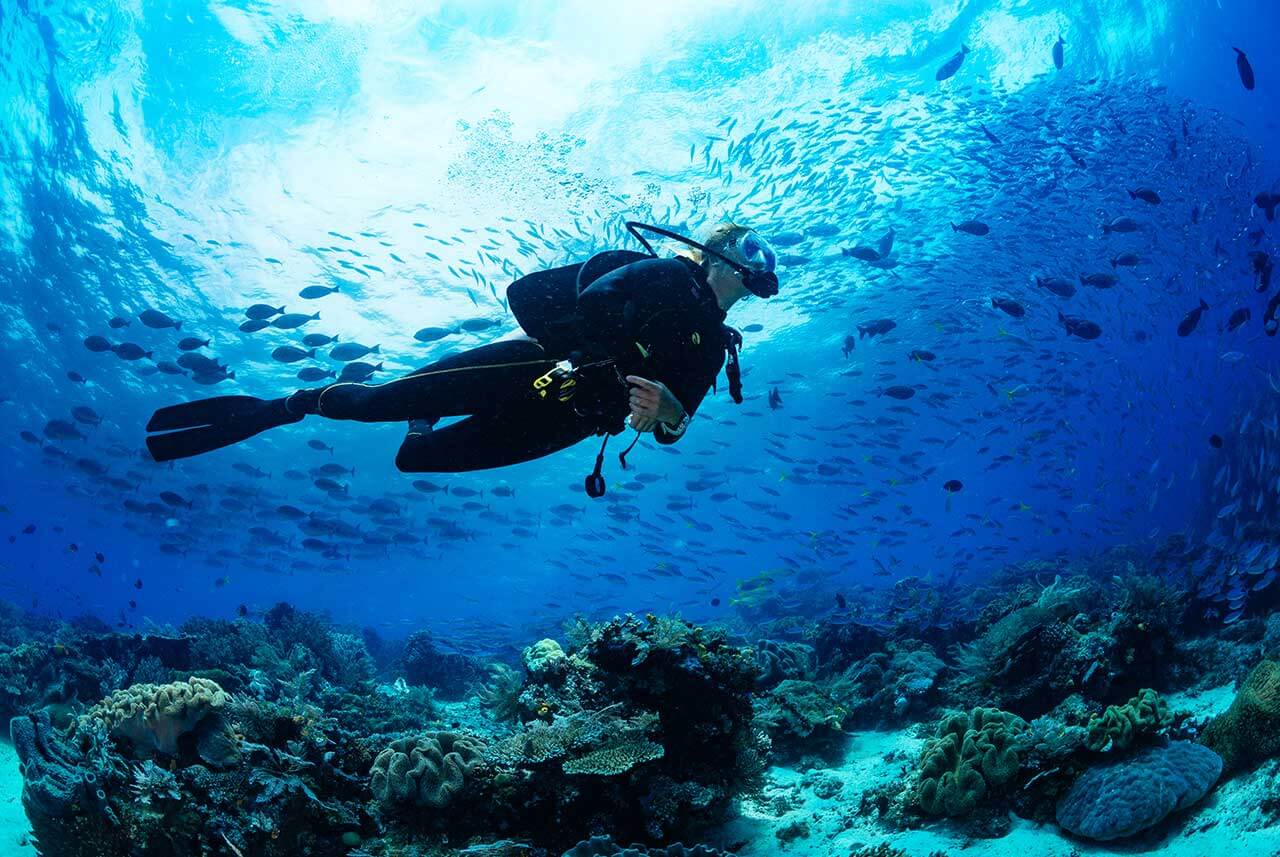
A Long Wait Is Your Friend
How long do you have to wait between diving and flying? Well, it depends. We’ll go over the specifics of it, but a solid 24 hours after SCUBA diving is the recommended wait time prior to getting in an airplane.
The Divers Alert Network recommends the following timeline for on-surface waiting between diving and flying in an airplane (when diving comes first):
- 12+ hours for single-day dives that require no decompression during ascent.
- 18+ hours for multi-day or repeated dives that require no decompression during ascent.
- 24+ hours for dives that require decompression during ascent; the Federal Aviation Administration (FAA) concurs.
Why can’t you fly within 24 hours of diving? In some instances you technically can. However, the longer time spent on the surface reduces the risk of decompression sickness coming in hot, which we don’t want. Why rush when there’s no need to? There are even health benefits of skydiving that you might miss if you prioritize timing over safety.
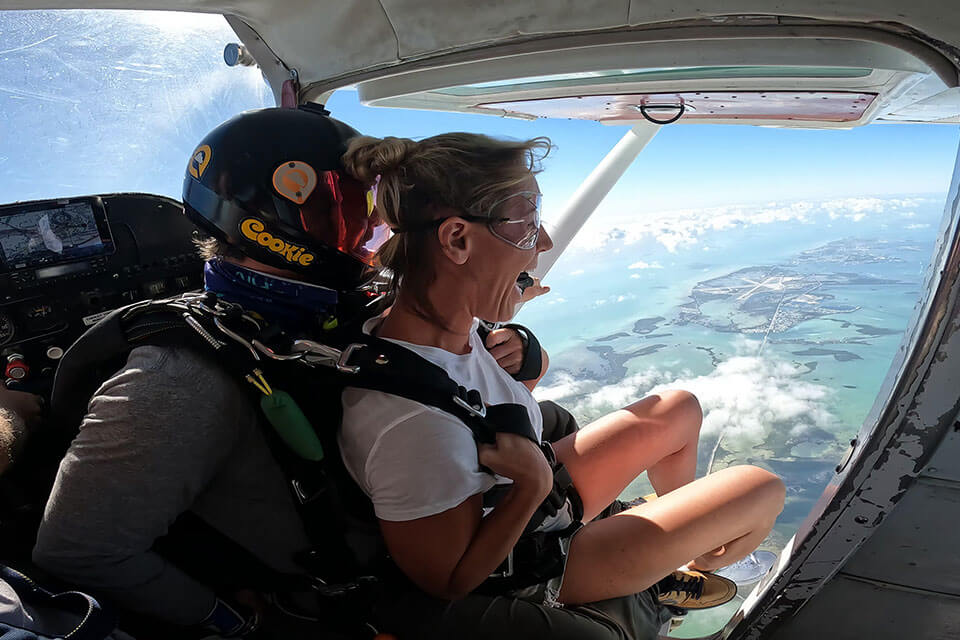
What About Pressurized Cabins?
Commercial flights are pressurized so that humans can breathe! Although aircraft cabins are pressurized on commercial flights, they only mimic about 8,000 feet – NOT ground level. After enduring the depths of the sea, your body needs time to adjust at ground level, not 8,000 feet in the air.
On the other hand, jump planes that are used for skydiving are totally depressurized. This means that there’s no apparatus in the airplane accounting for the loss of air pressure as we ascend to our jumping altitude. Pressurized or not, flying after diving shouldn’t be in your plans.
If you have limited time and have to pick one … we recommend skydiving, of course! If you’re able to do both, please make sure you do it safely by jumping from a plane before hanging out with the starfish and coral. We can’t wait to see you in the sky! Don’t hesitate to reach out with further questions about booking your skydiving adventure. Blue skies!

